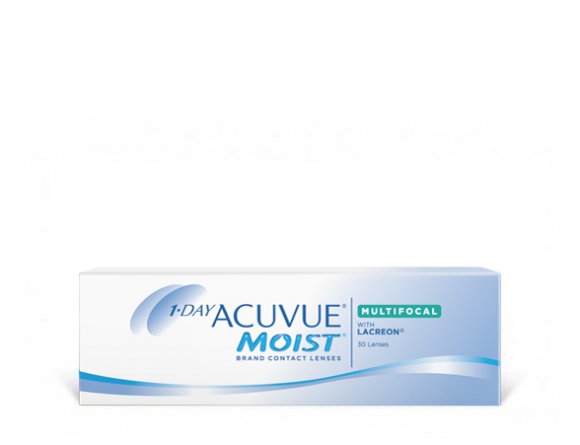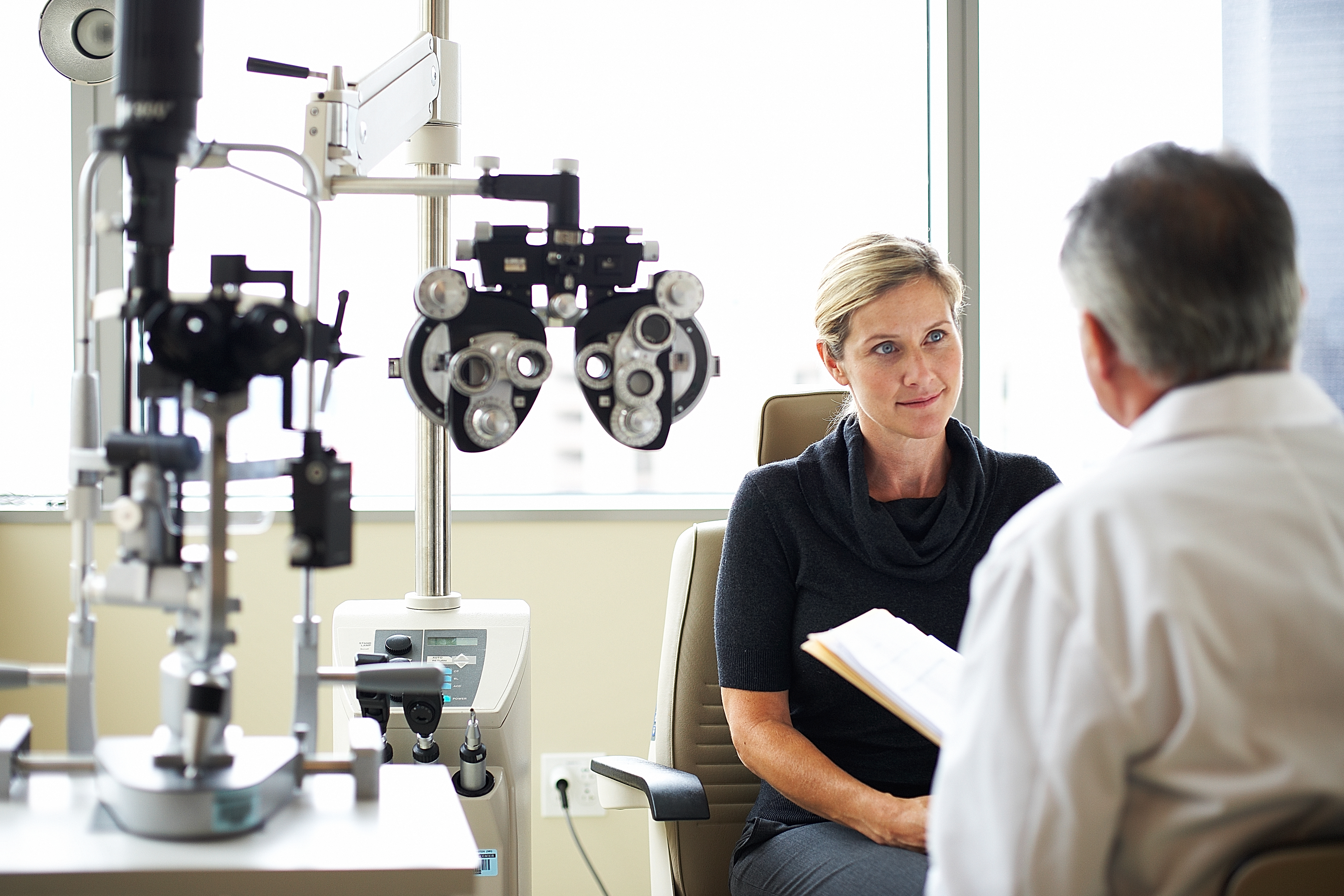1-DAY ACUVUE® MOIST MULTIFOCAL
1-DAY ACUVUE® MOIST MULTIFOCAL
1-DAY ACUVUE® MOIST MULTIFOCAL Contact Lenses are designed to provide exceptional visual performance 1*
Instructional Guides
Instructional Guides
Instructional Guides
1-Day ACUVUE® MOIST MULTIFOCAL contact lenses are designed to provide exceptional visual performance.1* Your patients can continue wearing contact lenses to do the things they love.
Blocks 99% of UVB and 85% UVA rays. 2†^
Using the simple fit guide provided, 4 out of 5 are fit successfully with one or fewer adjustments 3◊
-
Pupil Optimised Design – the only technology that uniquely optimises the optical design to the pupil size according to age and refractive power1
Available in daily wear
The back surface design provides a more precise fit1
Moisture-infused for hydration4†^
8.4 mm base curve/14.3 mm diameter
+6.00D to -9.00D (0.25D steps)
ADDs
Low (+0.75D to +1.25D)
Mid (+1.50D to +1.75D)
High (+2.00D to +2.50D)
| Lens material | Etafilcon A |
| Lens design | Aspheric centre-near design with Pupil Optimised Design Technology |
| Technology | LACREON® Technology |
| Water content | 58% |
| Center thickness at -3.00D (mm) | 0.084 (varies with power) |
| Oxygen transmissibility (Dk/t) | 25.5 x 10-9 |
| Class 2 UV blocking** | 99% UVB and 86% UVA |
| Visibility features | Visibility tint |
| Recommended replacement schedule | Single use: 1-day replacement |
| Package size available | 30 lenses |
Innovative technology
1-DAY ACUVUE® MOIST MULTIFOCAL with PUPIL OPTIMISED DESIGN Technology, a unique optical design system that is optimised by incorporating the natural pupil variation that occurs across the refractive error range and in patients as they age.1
Built-In Precision
Hybrid Back Curve design combines a central aspheric back curve to maintain the complex front surface optical design and a peripheral spherical back curve to achieve proper centration.4
Wetting agent that won’t blink away
LACREON® Technology, with the locked-in wetting agent PVP, provides a long-lasting cushion of moisture for 20 hours or more.6,7
*Compared to prior JJVC multifocal design, technology optimized for both the parameters of refractive error and add power for a multitude of viewing distances and light levels.
†Helps protect against transmission of harmful UV radiation to the cornea & into the eye.
^ All ACUVUE® contact lenses have Class 1 or Class 2 UV-blocking to help provide protection against transmission of harmful UV radiation to the cornea and into the eye. UV-absorbing contact lenses are NOT substitutes for protective UV-absorbing eyewear such as UV-absorbing goggles or sunglasses because they do not completely cover the eye and surrounding area.
◊Three total lenses
References:
-
JJV Data on file 2022. CSM- ACUVUE® PUPIL OPTIMIZED DESIGN Technology: JJVC contact lenses, design features, and associated benefits.
-
JJV Data on File 2022. Material Properties & Lens Design Aspects: 1-DAY ACUVUE MOIST Brand MULTIFOCAL and ACUVUE OASYS MAX 1-Day MULTIFOCAL contact lenses and other daily disposable presbyopic contact lenses; V3.0 April 20, 2022.
-
JJV Data on File 2015. 1-DAY ACUVUE MOIST MULTIFOCAL Fit and Performance.
-
JJV Data on File 2020. ACUVUE Brand - Eye-Inspired Innovations.
Important Safety Information
ACUVUE® Contact Lenses are indicated for vision correction. As with any contact lenses, eye problems, including corneal ulcers, can develop. Some wearers may experience mild irritation, itching or discomfort. Contact lenses should not be used in case of eye infections or any other eye conditions, or in case of a systemic disease that may affect the eye. For detailed product information, including contraindications, precautions and adverse reactions, please consult the Instructions for Use available on http://www.e-ifu.com/
PP20231DAVM4368




